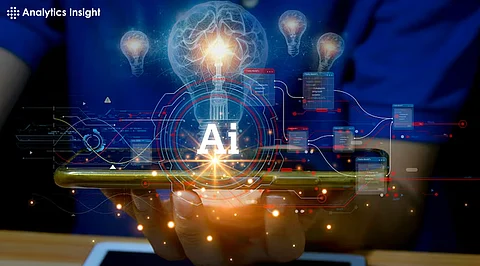

As the digital world continues to develop at an unprecedented rate, it is essential for businesses to always look for new and effective methods that allow them to not only stay competitive but also grow.
By far, the most exciting avenue is to make use of generative AI - a technology not related solely to control and automation but capable of producing new valuable assets.
However, to truly harness the power of generative AI for a sustainable competitive advantage, organizations must adopt a strategic and multifaceted approach.
This will lead to a lot more than just rolling out the newest AI tools, but embedding them much deeper into the company's core strengths and market strategies. In this article, we will cover 3 key strategies to accomplish that: Workflow Advantage, Intelligence Advantage, and Relationship Advantage.
If you implement generative AI in your core business processes, it can change the way a company runs.
Generative AI can help you gain a competitive advantage by reducing processes and increasing the efficiency of your organisation, as well as providing better customer satisfaction.
Collaboration using AI enabled content generation, automated processes, and decision support tools allows you to deliver a leaner business model faster.
The primary use of generative AI is to generate high-quality content at scale. For example, AI can help marketing teams produce high-quality blog posts, social media updates, and send tailored email campaigns that address someone's unique needs.
This will save you even more time and offer a consistent way to communicate with all your customers, which increases brand loyalty & customer engagement.
Automating repetitive tasks with AI-driven automation saves a lot of time and forced resources. In manufacturing, generative AI could power supply chain logistics optimization and maintenance prediction, as well as automate quality control processes.
This dramatically improves operational efficiency, reduces costs, and improves turnaround times, thereby giving a significant competitive advantage.
Generative AI makes decision-making more agile by offering real-time insights and predictive analytics, generative AI aids decision-making.
AI is able to do this, among other reasons, owing to the fact that it has been able to analyze data at a scale and speed which human analysts might have never thought of doing. This allows businesses to act faster on decisions, predict market shifts, and identify new opportunities before competitors.
Generative AI opens up never-before-available avenues for making decisions, innovating faster and planning better ahead, giving you a unique edge. This means creating new ideas, breaking down data silos, and surfacing insights that drive business scaling and unlock innovation.
Artificial intelligence may very well be a discovery and invention facilitation approach. Automated intelligence can identify new opportunities within the market by evaluating larger datasets and predicting trends for future product and service concepts.
For instance, AI may assist in identifying novel drug combinations or possible indications for existing molecules, aiding the innovation pipeline within the pharmaceutical sector.
Generative AI has the ability to handle and concatenate tons of data way more efficiently than traditional methods. This allows companies to understand more about customer behavior, market trends, and insights into operations.
For example, retailers can use AI to track consumer buying trends as well as stock optimally so that they always have enough in store but do not incur excess inventory.
Generative AI can help decision-making by real time insights and predictive analytics. AI can process massive amounts of data and identify patterns and trends that might not be immediately obvious to human analysts.
It helps businesses make timely, informed decisions and act in accordance with market changes, proactively ensuring they do not fall behind their competitors.
It is easy to imagine how generative AI can enhance relationships with customers and partners through a new paradigm of personalized engagement. Adopting this approach would involve leveraging AI content and tools to aid customer experience, build switching costs, and increase entrenchment with partners.
AI can also use customer data to produce personalized content and recommendations that can improve the CX.
An e-commerce service can use AI to suggest products that a customer may be interested in because the system remembers all his browsing and purchase history - increasing the likelihood of conversion or repeat business.
In addition, AI-driven chatbots empower instant personalized support, which boosts customer satisfaction and loyalty.
By building an ecosystem of AI-focused tools and services, it is possible to increase switching costs and lock-in relationships with customers as well as partners.
This includes providing customers with new AI-driven analytics tools to optimize their operations, as a software provider may do.
With the compounding nature of these additional tools as part of a customer’s workflow, they become more dependent on your solutions and have less desire to change competing options.
By providing partner insights and tools, AI supports collaboration with partners. For example, in supply chain, AI can offer real-time visibility of inventory levels and demand forecasts between manufacturers and suppliers and distributors, providing improved coordination ability.
Generative AI has the potential to create a sustainable competitive edge, but it is not as simple as simply plugging in at one point and calling it good.
This approach first and foremost helps enterprises on their AI journey in Workflow Advantage (enabling businesses to get more out of their core operations), Intelligence Advantage (enhancing decision-making capabilities across various user roles), and Relationship Advantage (creating a better relationship with customers & partners).
In the end, we need to get better at treating generative AI as more than just a technology but rather as a strategic lever for bending our industry in new directions.
Executing AI investments in alignment with unique business strengths and ecosystem dynamics, companies can truly leverage the generative capabilities of AI to achieve a sustainable competitive advantage over time.
